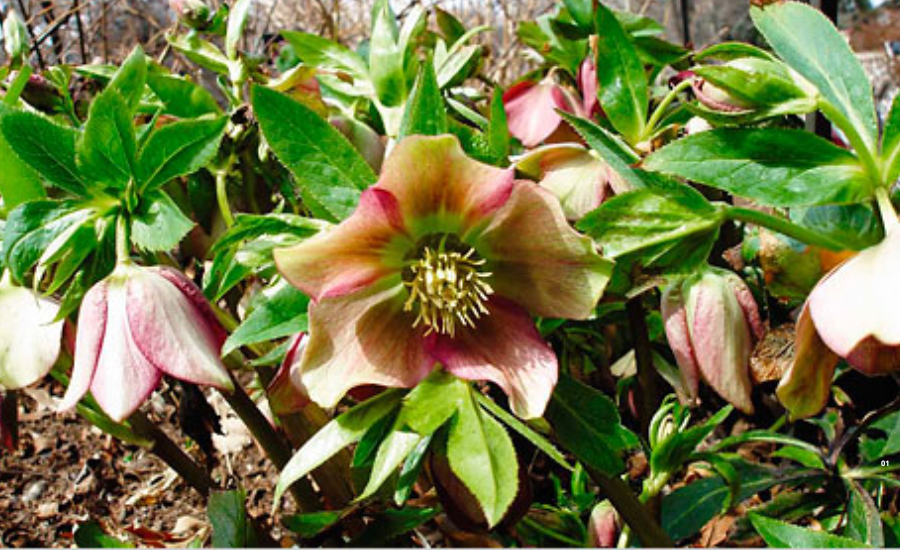For countless puzzle enthusiasts worldwide, the New York Times (NYT) crossword puzzle represents the pinnacle of wit, mental agility, and linguistic creativity. Since its inception in 1942, the daily crossword has been a staple of the newspaper, attracting solvers ranging from casual participants to seasoned experts. These clues are a mix of wordplay, synonyms, homophones, and references to pop culture, literature, history, and current events. The puzzles also vary in difficulty, with Mondays being the easiest and Saturdays the hardest. Sundays, though larger, are often on par with Thursdays in terms of complexity.
One particular clue that has recently perplexed solvers is “Monk’s Hood Name.” If you’re reading this, you’re likely curious about the meaning of this enigmatic clue and why it has sparked such intrigue among players. In this article, we’ll delve into crossword-solving techniques, the significance of clues like “Monk’s Hood Name,” and how understanding the context of a puzzle can turn frustration into the joy of discovery.
The New York Times Crossword: A Puzzle Institution

Before diving into the specific clue at hand, it’s essential to appreciate the cultural and intellectual phenomenon that is the NYT crossword puzzle. Will Shortz, the crossword editor since 1993, has elevated the puzzle’s status through his keen sense of wordplay, variety, and clever misdirection. With the NYT puzzle, solving is not just about finding the right word—it’s about deciphering a code, unlocking a riddle, and feeling the thrill of connecting seemingly obscure clues to a satisfying solution.
Crossword fans thrive on this challenge. Every day, they tackle the puzzle using a combination of linguistic knowledge, trivia, pattern recognition, and sometimes, educated guesses. The NYT puzzle has spawned books, documentaries, and even competitions, where solvers race to complete the grid under pressure.
The Role Of Clues In The NYT Crossword
A crossword puzzle is more than just a grid filled with black-and-white squares. Its true charm lies in the clues, the cryptic phrases that guide solvers toward the correct answers. A well-crafted clue teases the brain, forcing solvers to use lateral thinking and their command of the English language. Clues range from straightforward definitions to cryptic wordplay, anagrams, and even puns. Some clues offer direct hints, while others require solvers to dig deep into their memory for obscure facts or word associations.
Often, what makes a clue tricky is not its difficulty but the clever way it plays with language. A word can have multiple meanings, and a good crossword clue will play on these ambiguities to lead solvers down a path of creative thinking.
“Monk’s Hood Name”: Understanding The Clue
Now, let’s focus on the clue that has been raising eyebrows: “Monk’s Hood Name.” On the surface, it seems like a straightforward reference, but like most NYT crossword clues, it has layers that must be peeled back to reveal the answer.
First Interpretation: The Flower Monkshood

At first glance, “Monk’s Hood Name” could be interpreted as a reference to the plant known as monkshood. This herbaceous plant, part of the buttercup family, is known for its hood-shaped flowers that resemble the hoods worn by monks, hence its name. The scientific name of the plant is aconite, and it has been historically used both in herbal medicine and as a poison due to its highly toxic properties.
“Monk’s hood” is often used interchangeably with aconite, so this could be a direct reference to the plant. Clues like this one often require solvers to think botanically, as the NYT crossword frequently includes references to plants, animals, and other elements of the natural world.
Second Interpretation: Religious Garb

Another layer of interpretation relates to monks and their clothing. Monks traditionally wear a distinctive robe with a hood, commonly referred to as a “cowl” or “habit.” The clue could be hinting at the specific name for this hooded garment worn by monks, which was designed to offer modesty and simplicity as part of their religious observance. In this case, the answer might not refer to a plant but rather to the garment itself, such as cowl, capuche, or scapular—terms commonly associated with monastic robes.
Third Interpretation: Medieval and Historical Figures
Crossword clues often draw on historical and literary references, and “Monk’s Hood Name” could be an allusion to a monk from history or literature. One famous example would be Friar Tuck from Robin Hood’s band of Merry Men, although his “hood” is metaphorical.
Fourth Interpretation: Wordplay and Puns
Finally, and often the most delightful aspect of crossword solving, is the realization that a clue might be a pun. Could “Monk’s Hood” be a play on words, pointing to something entirely unrelated to monks, plants, or garments?
In this case, the answer might ultimately be simpler than expected: aconite, the scientific name for monkshood, as it ties together both the botanical and pun interpretations.
Techniques For Solving Cryptic Clues
To fully appreciate the complexity behind clues like “Monk’s Hood Name,” it’s important to understand some key crossword-solving techniques. Here are a few tips that seasoned solvers use to crack difficult clues:
- Look for Wordplay: Always consider the possibility that the clue is using puns, homophones, or double meanings to lead you in a new direction.
- Break Down the Clue: Identify each part of the clue and consider whether it’s hinting at a definition, a synonym, or something more obscure. Many clues have two parts: a direct definition and a wordplay hint.
- Consider Letter Patterns: Once you’ve filled in a few intersecting answers, use the known letters to help you brainstorm potential words that fit the pattern.
- Think Laterally: Crossword clues often challenge you to think outside the box. Consider synonyms, antonyms, or even idiomatic expressions that might apply.
- .
Why “Monk’s Hood Name” Stumps Solvers
This clue in particular presents a challenge because it’s obscure and open to multiple interpretations. Is it referring to a plant? A piece of clothing? A historical figure? Or something else? The simplicity of the clue contrasts with its complexity, which is a hallmark of a well-crafted crossword clue. NYT crossword constructors are known for offering just enough information to lead solvers in the right direction while leaving room for playful misdirection.
What makes this clue even more challenging is its reliance on knowledge that isn’t necessarily common. Not everyone is familiar with aconite or monastic terminology, which adds a layer of difficulty for solvers who may not have encountered these references before.
The Importance Of General Knowledge in Crosswords
To excel at crosswords, it helps to have a broad range of general knowledge. NYT crossword puzzles often draw on trivia from various fields: literature, sports, science, history, and pop culture. A clue like “Monk’s Hood Name” demonstrates how familiarity with botanical terms or religious clothing can make the difference between solving the puzzle quickly and being stumped for hours.
Crosswords reward curiosity and a desire to learn. Players who encounter new terms often look them up and remember them for future puzzles. In this way, crossword-solving is both a mental challenge and an educational experience.
Conclusion
In conclusion, the clue “Monk’s Hood Name” is a prime example of what makes the New York Times crossword puzzle so engaging and rewarding for solvers. While the clue appears straightforward, it requires solvers to explore multiple interpretations—botanical, religious, historical, and even playful. The most likely solution to this particular clue is aconite, which refers to the poisonous plant known as monkshood. However, the journey to this answer involves understanding wordplay, general knowledge, and the ability to think laterally.
The NYT crossword puzzle continues to be a beloved pastime for its clever clues, intellectual challenges, and the satisfaction that comes with filling in that final square. Whether you’re a seasoned solver or a newcomer, each puzzle offers an opportunity to test your mind, expand your knowledge, and enjoy the art of wordplay. So, the next time you encounter a clue like “Monk’s Hood Name,” remember to take a step back, consider all the possible angles, and savor the moment when the solution finally clicks into place.
Stay in touch for more updates and alters visit: Times Radar!
